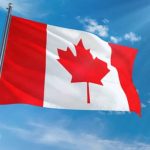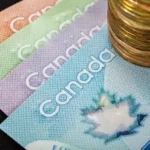By Will McMartin, TheTyee.ca, July 20, 2015
No time to coast New Dems! To gain victory in October, still more lift needed in key regions.
You’ve seen the polls putting Thomas Mulcair and his New Democrats on top. Surely the ever rising fortunes of the NDP, turbo-boosted by the Alberta breakthrough, spell the end of the nine-year reign of Stephen Harper’s Conservative government. Right? Wrong. In fact, Harper is near-certain to be our next prime minister unless the NDP makes significant further breakthroughs in key parts of Canada.
This will be frustrating news to those who are predicting Harper’s defeat. Sorry. I am just the number crunching messenger here. If you are a New Democrat (or even a loose ally as a member of the Anybody But Conservative voting club), allow me to explain why it’s time to stop high fiving and start rolling up your sleeves to sway a lot more voters to your side.
All Those New Ridings
Electoral redistribution has added 30 seats to the House of Commons for a new total of 338. A majority government – which Harper and the Tories won four years ago with 166 seats – now requires 170. That means the Conservatives need to add just four seats to retain their majority.
But the fact is, redistribution has made the Tories’ task much, much easier. This is because when votes from the last election are transposed onto the newly drawn electoral districts, Harper’s Tories pick up an extra 22 seats, compared to the NDP and the Liberals adding just six and two respectively.
That means the Conservatives head into the election with 188 redistributed seats – 18 more than the 170 they need for a majority in the expanded House of Commons. The transposed seat total for the New Democrats is 109, and for the Liberals, 36 – which means that those two parties are short of a majority by 61 and 134 seats respectively.
Simply, Harper’s team could lose 18 ridings and still retain their majority, or even shed a whole bunch – 30, 35 or maybe even 40 or 50 – and still have enough to form a minority government.
Mulcair and Justin Trudeau, on the other hand, need to add dozens of new seats if one or the other hopes to obtain even a bare minority. And that remains difficult even for an NDP leading the polls today.
To those shaking your heads in denial, let me break it down region-by-region, starting with the provinces that don’t gain seats from redistribution.
Atlantic Canada, Saskatchewan and Manitoba
In Atlantic Canada, home to four provinces with 32 seats, Harper’s Tories have the lead in 15. They’ll probably be wiped out in Newfoundland and Labrador, but ought to hold National Revenue Minister Gail Shea’s seat in PEI. In New Brunswick, the Conservatives hold eight of 10 seats – of which six, maybe seven (that held by Bernard Valcourt, the minister of Aboriginal Affairs), appear safe for the government.
Nova Scotia deserves close scrutiny because three of four Tory incumbents – including the high-profile attorney general, Peter MacKay – are retiring from Parliament. Harper would be happy to retain two of those seats and likely will.
In sum, the Conservatives should come out of Atlantic Canada with nine or 10 seats – a loss of five or six from 2011 with the newly drawn electoral map.
In Saskatchewan and Manitoba – both of which stay at 14 ridings apiece – the Tories hold a total of 22, while the New Democrats have five and the Liberals, one.
Harper’s team should retain at least 18 redrawn Prairie seats (nine in each province), which were won with more than 50 percent of the vote in 2011. Another two to four ridings across both provinces also could return Tory MPs, albeit in tight contests.
The closest battle in Manitoba may be in Winnipeg South Centre, where Grit Jim Carr – a former MLA – will attempt to defeat Tory first-termer (and ex-Liberal) Joyce Bateman.
The best Saskatchewan tilt to watch will be in Regina-Lewvan, a newly drawn riding that favours the NDP over the Tories by just 1.3 percentage points. That contest will feature labour economist Erin Weir against business-owner Trent Fraser.
So. In these six Atlantic Canada and Prairie provinces combined, Harper’s Conservatives probably will lose five to 10 seats.
Quebec
Those seats I just had the Tories losing in Atlantic Canada, Saskatchewan and Manitoba? In Quebec, the Tories might gain all of them back. Here is why.
Quebec has added three new seats for a total of 78.
Four years ago, much of the ‘progressive’ vote in Quebec went to the New Democratic Party, as the Bloc Québécois and Liberals collapsed to just 23.4 percent of the vote (and four seats) and 14.2 percent (seven seats) respectively.
In the event that either or both of those latter two parties – the BQ led by a chastened Gilles Duceppe (who lost his seat in 2011 and quit politics, but now is back for a rematch), and the Grits under Trudeau – increase their vote-share in October, those gains almost certainly will be at the expense of Mulcair and the NDP.
That ought to bring a number of Quebec seats – at least two, possibly six – within the Tories’ grasp. It’s a realistic objective given that Harper’s Conservatives captured 10 seats in la belle province in both 2006 and 2008, before dropping to five in the last tilt.
So, looking only at the aforementioned seven provinces, it is entirely possible that the Tories record a “wash” – that is, lose a number of seats in Atlantic Canada and the Prairies, but break-even by picking up an equal number in Quebec.
That leaves Harper’s fate to be determined in three provinces – Alberta, which adds six new seats (for a total of 34), British Columbia, which similarly gains six (for 42) and Ontario, which picks up 15 (for 121).
Alberta and British Columbia
The federal Tories – notwithstanding the drubbing their provincial counterparts received from Rachel Notley and the NDP on May 5 – utterly dominate Alberta. The Conservatives have a solid grip on 33 newlydrawn ridings and will be competitive in Edmonton-Strathcona, held by New Democrat Linda Duncan.
The situation is far more tenuous for the Conservatives in British Columbia, where the government has a lead in 28 newly drawn districts. Harper’s team ought to be able to retain about 20 seats in BC, mostly those located in the northeast, the Interior, the Okanagan, the Fraser Valley (including parts of Surrey), the North Shore of Burrard Inlet and parts of Vancouver Island.
Tougher battles may be expected in about eight Tory-held seats, including Port Moody-Coquitlam where cabinet minister James Moore, 39, unexpectedly quit after five consecutive victories. Another close fight will take place in Vancouver South, held by first-term MP Wai Young.
Let’s review my calculations so far. The nine provinces I’ve discussed – which have a total of 214 seats – may be expected to return 95 to 100 Conservative MPs, thereby putting Harper’s Tories on the glide-path to government. Which brings us to Canada’s most populous province.
Ontario
If you agree (happily or not) that my figuring to this point is sane and more than plausible, then the next question is whether Stephen Harper wins a majority or minority administration. That will come down to how his Conservatives fare in Ontario.
Over the last four general elections, Harper’s Conservatives have won an everincreasing number of Ontario seats – 24, 40, 51 and 73. Under the province’s newly drawn electoral boundaries, the Tories have an advantage in 83 of 121 ridings.
Recall that 170 seats are needed for a majority government. In the event that the Conservatives in October elect at least 70 to 75 MPs in Ontario, they’ll be returned with a majority. Even as few as 40 to 50 seats would give the Tories a workable minority in the House of Commons.
So, how many Ontario seats can Harper’s team realistically expect to win? Transposing the 2011 results on the newly drawn electoral map shows that the Tories won 47 ridings with more than 50 percent of the vote. Put another way, Conservative candidates got more votes in each of those districts than all of their opponents combined.
Plus, Harper’s team won another 18 redrawn Ontario ridings with between 45 and 50 percent of the vote, and they should retain a dozen or so of these. That puts the Tories on track to win about 60 seats in Ontario – without considering the 18 districts they captured in 2011 with less than 45 percent.
A riding to watch is the newly created Hamilton West-Ancaster-Dundas. Transposed results from four years ago show the Conservatives with 42.4 percent of the vote, closely followed by the New Democrats and Liberals with 28.2 percent and 24.9 percent respectively.
Running for the Tories is Vincent Samuel, a retired nurse who immigrated to Canada from Pakistan in 1990. Representing the NDP is school trustee Alex Johnstone, who finished a distant third in the 2014 provincial-general election in an overlapping riding. And carrying the Grits’ banner is Filomena Tassi, a Catholic school chaplain who apparently has pledged to Trudeau that she will put aside her pro-life views if elected to the House of Commons.
Wild Card: The Northern Territories
Finally, given the expected closeness of the election, all eyes on October 19 may be on the northern territories. The Conservatives currently hold Yukon and Nunavut, while the New Democrats represent the Northwest Territories. The difference between a majority government and a minority may be decided by these three seats.
Where Breakthroughs Must Happen
All in all, the Tories look likely to elect about 155 MPs in the expanded House of Commons. That’s only 15 seats shy of the 170 needed for an absolute majority – and more than enough for a solid minority.
Still, election campaigns matter. Canadians with long memories will recall many historic events that either propelled a politician and their party to power, or relegated them to the opposition benches. Will it be Stephen Harper – soon to embark on his fifth campaign as party leader – who makes an egregious error on the campaign trail and suffers a fatal fall in the polls, or will that dubious honour go to Mulcair or Trudeau, both of whom for the first time are leading their parties into electoral battle?
More to the point, is it remotely possible for the New Democrats to prosper from a Tory – or a Liberal – stumble? Of course, insofar as Mulcair’s party needs to add only 30 or so redistributed seats to attain what might be a functioning minority. Still, the path to victory remains challenging.
At best, the New Democratic Party probably will pick up only singles in Atlantic Canada, Manitoba and Saskatchewan. Mulcair-mania perhaps could lead to the addition of a seat in each of Newfoundland (most likely: Avalon) and Nova Scotia (South Shore-St. Margaret’s), plus a pair on the Prairies (Desnethé-MissinippiChurchill River and Elmwood-Transcona).
Big gains also look to be mathematically impossible in Quebec, where the New Democrats won 61 of 78 distributed seats in 2011.
Simply, in his quest to become prime minister, Mulcair needs to make massive gains in one or more of three provinces: Alberta, BC and Ontario.
Alberta elected a provincial NDP government in May. As residents of BC and Ontario will attest, the ascension to power of provincial New Democrats has a historically negative impact on their federal cousins. The notion that a Notley government in Edmonton will per force result in sizeable Alberta gains in October for Mulcair’s team is, to be polite, interesting.
That leaves British Columbia and Ontario. Four years ago, the New Democrats finished first in 11 BC seats, and second in another 19, while the results in Ontario were 20 firsts and 38 seconds. Could any of those second-place finishes be transformed into victories?
Two Vancouver Island ridings (North Island-Powell River and Courtenay-Alberni) appear the best bets for NDP success in BC, but a rising Green Party – which scored a historic breakthrough victory in SaanichGulf Islands in 2011 – will make that task considerably more difficult. The fact is, any significant increase for the New Democrats in BC will depend on the collapse of at least two of their three major competitors – the Tories, Grits and Greens.
In Ontario, of the 38 second-place results recorded by the NDP in 2011, just four saw the party get more than 30 percent of the redistributed vote. As in British Columbia, sizeable New Democratic Party gains in central Canada will require a dramatic plunge in support for its major rivals.
So, election campaigns matter. So, too, does electoral math, and analysis of redistributed seats shows that the easiest path to victory belongs to Stephen Harper and the Conservatives.
Our Comment
A sobering analysis! But a welcome insight into the task ahead!
I have observed a somewhat disconcerting degree of confidence abroad that, given Steven Harper’s record, this election will certainly rid us of Canada’s Party of One (Michael Harris, Viking).
We cannot afford to underestimate what we’re up against! There are still many Canadians who know too little about Steven Harper’s efforts to, as Mel Hurtig puts it, “remake our nation according to his own values and priorities.” (The Arrogant Autocrat, Mel Hurtig Publishing, Vancouver).
Our thanks to Will McMartin and TheTyee.ca for this concrete information on which to base our efforts in this crucial campaign.
Élan








